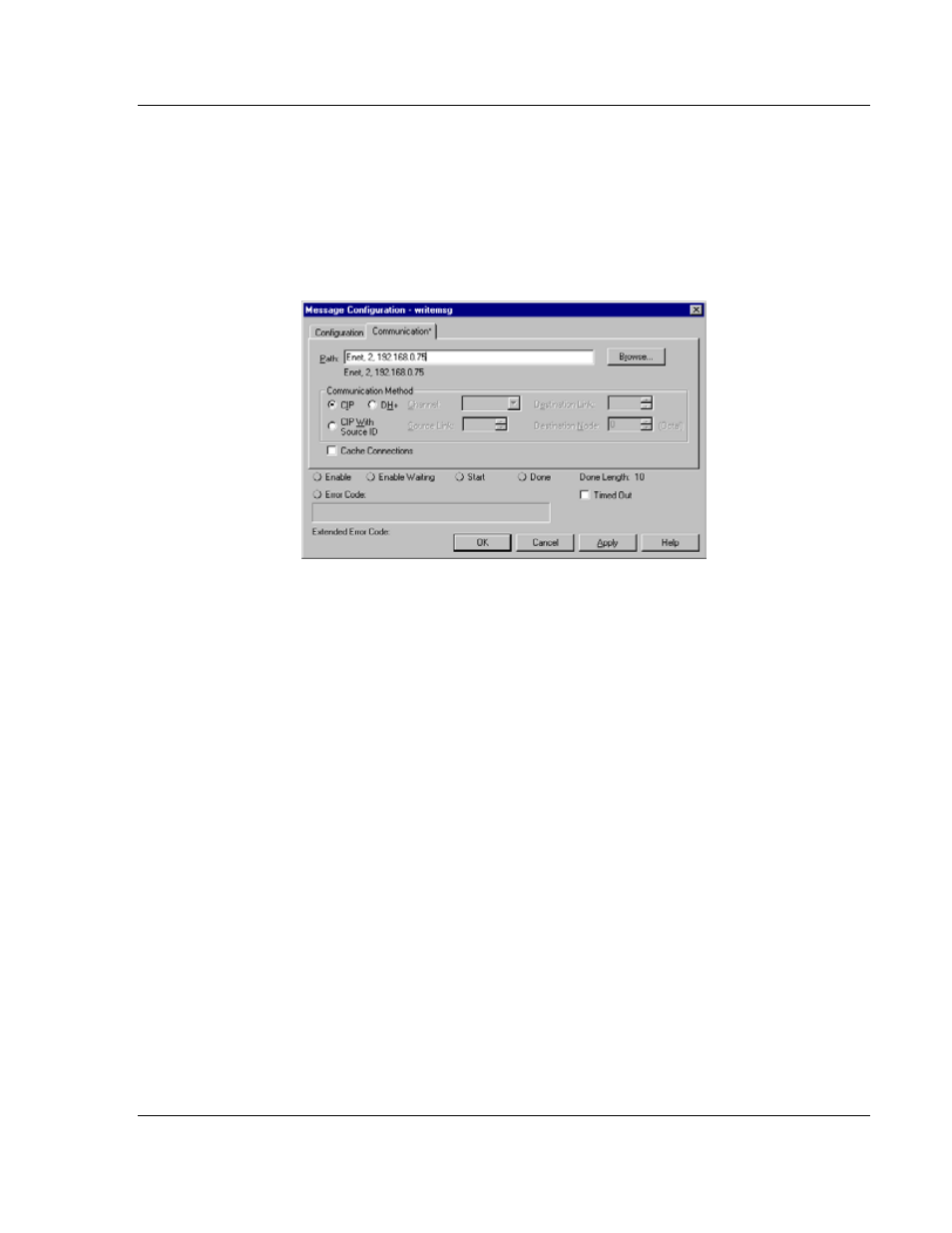ProSoft Technology MVI71-DFNT User Manual
Page 145

MVI71-DFNT ♦ PLC 5
Reference
EtherNet/IP Client/Server Communication Module
User Manual
ProSoft Technology, Inc.
Page 145 of 175
February 3, 2011
Complete the dialog box for the data area to be transferred. For PLC5 and SLC
messages, the
D
ESTINATION
E
LEMENT
should be an element in a data file (such
as, N10:0). For the PLC2 Unprotected Write message, the
D
ESTINATION
E
LEMENT
is the address in the module’s internal database and cannot be set to a value
less than ten. This is not a limitation of the module but of the RSLogix software.
For a PLC2 unprotected write or read function, the database address should be
entered in octal format. Additionally, the
C
OMMUNICATION
information must also
be configured. The following is an example of the dialog box.
Verify that the
CIP
radio-button is selected as the
C
OMMUNICATION
M
ETHOD
. The
P
ATH
specifies the message route from the ControlLogix processor to the DFNT
module. Path elements are separated by commas. In the example path shown,
the first element is "Enet", which is the user-defined name given to the 1756-
ENET module in the chassis (you could substitute the slot number of the ENET
module for the name), the second element, "2", represents the Ethernet port on
the 1756-ENET module, and the last element of the path, "192.168.0.75", is the
IP address of the DFNT module, the target for the message.
More complex paths are possible if routing to other networks using multiple 1756-
ENET modules and racks. Refer to the Rockwell Automation Support
Knowledgebase for more information on Ethernet routing and path definitions.
Encapsulated PCCC Read Message
Read commands transfer data from the module to a ControlLogix processor. The
following encapsulated PCCC commands are supported from a ControlLogix
Processor:
PLC2 Unprotected Read
PLC5 Typed Read
PLC5 Word Range Read
PLC Typed Read
